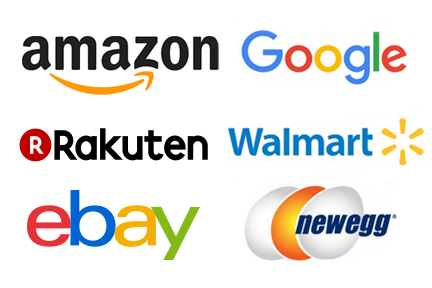 Has your brand been Amazoned? One of the consequences of online shopping
is that consumers are able to compare prices on goods and services quickly. Do
an online search for anything and you will get a shopping list from which to
choose. That is great if you are a consumer, but not so great if you are
selling a brand based on its quality. When price is the only variable customers
consider, your brand is reduced to a commodity, where brand loyalty is tossed
out the window and the bottom-line rules. That rubs against my marketing
feathers, but has become true of many brands. Think about the last time you
purchased gasoline. Did you do so out of brand loyalty or because the price was
the lowest around town? It is amazing what lengths people will go to save two
cents off a gallon of gasoline. They will do the same thing with you and your
competitors’ brands.
Has your brand been Amazoned? One of the consequences of online shopping
is that consumers are able to compare prices on goods and services quickly. Do
an online search for anything and you will get a shopping list from which to
choose. That is great if you are a consumer, but not so great if you are
selling a brand based on its quality. When price is the only variable customers
consider, your brand is reduced to a commodity, where brand loyalty is tossed
out the window and the bottom-line rules. That rubs against my marketing
feathers, but has become true of many brands. Think about the last time you
purchased gasoline. Did you do so out of brand loyalty or because the price was
the lowest around town? It is amazing what lengths people will go to save two
cents off a gallon of gasoline. They will do the same thing with you and your
competitors’ brands.
What happens to marketing when a brand is sold on price alone? There are
two options that will direct your marketing strategy. First, you can buck the
trend and try to sell based on other essentials, such as your great customer
service or your quality. Traditionally, selling quality takes some time. It is
not likely to be a cash-and-carry transaction. This has its risks in today’s
economy. The new media has boiled down marketing to two or three bullet points,
so you have to be convincing in a short amount of time. Marketing important
features that allow you to charge more than your competition has to be to the
point and be very compelling.
The second strategy is to embrace the low-price option, which means your
marketing has to be geared to sell large quantities with very small margins to
make a go of it. Think of big box retailers and their marketing strategies.
Your marketing has to stress the price that can’t be beat. Of course, when you
follow this model, you run the risk that your competition will undercut you and
start a price war (which is exactly what happened to gasoline brands). The
consumer will perceive all brands are the same with the only difference being
the price. If that happens, you have no other features to fall back on. Here is
the real danger: there is a point where you are losing money. If the
competition is able to cut their price below your costs, it is lights out for
your brand. There has to be more to your marketing than just promoting your low
prices.
There are ways to market around the lowest price scenario. An old
marketing tactic that plays up the lowest price strategy is called
"loss-leader” marketing. It sells a product at cost to draw in shoppers and
then makes up the difference on ancillary items that pair well with the
loss-leader. Think about getting an inexpensive phone if you sign up for a
three-year service agreement. The economical phone price gets the consumer in
the door; the money is made on the agreement. If you go this route, keep in
mind your competition will always come up with a way to counter your strategy.
Using the phone as an example, if you require your customers to sign a
three-year deal, your competition could market a no-contract service. You have
to be ready to change what you are doing in marketing to stay ahead of the game
when you are marketing at a low price.
Another strategy many businesses have used for their competitive advantage
is incentivizing a larger purchase. This allows you to circumvent the piece
price/commodity dealing because by bundling several items together (some of
which can be promoted as "free”), you have all but eliminated the online
pricing game. Your marketing should promote not only the free items but the
limited time of a bundling offer. By limiting the time, you create an urgency
for the consumer.
While marketing to the lowest price may be a necessity, there are
drawbacks that leave you vulnerable. Many businesses have cut their consumer
services in order to drive their costs down. The most common cut is in customer
service. Anyone who has tried to resolve an issue after an online purchase
knows what I am talking about. If that describes your competition, you have a
great marketing opportunity. You can beat your competition by promoting your
customer service alongside your great prices. Marketing works when you are
solving problems and taking away the pain of the customer.
Consumers have always shopped based on price. That will never change,
but when you market on price alone – not the other features and benefits of
your brand – you will be vulnerable to a price war and, worse yet, your brand
will be relegated to commodity status in the marketplace.